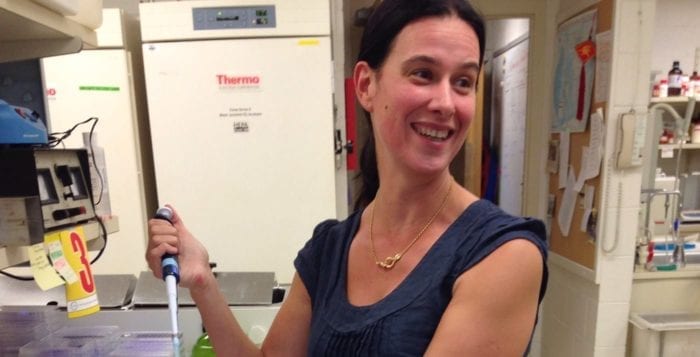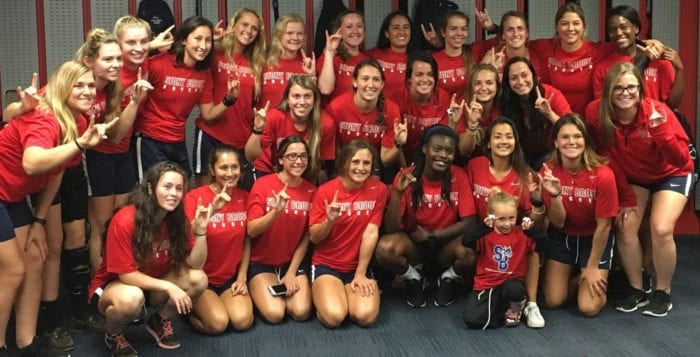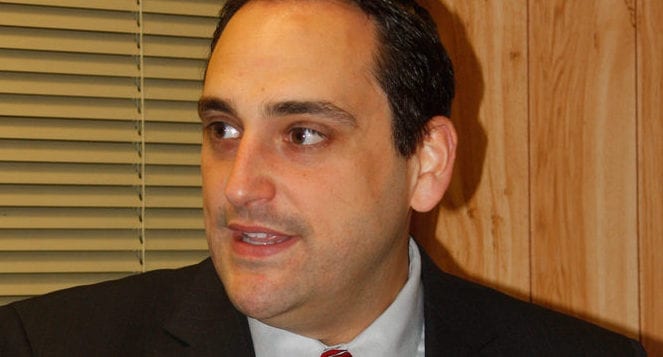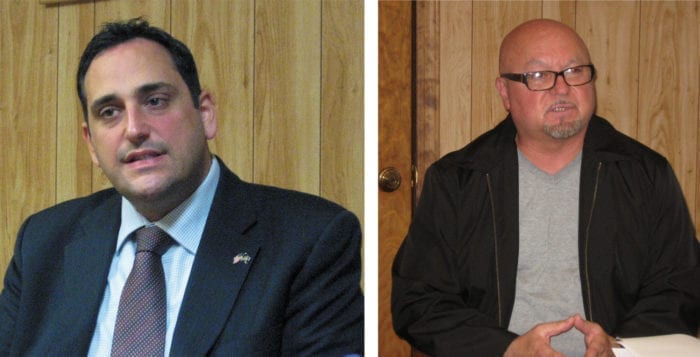By Daniel Dunaief
Raffaella Sordella, whose lyrical name reflects her upbringing in Italy, takes the fight against cancer personally. That’s because she underwent surgery for a tumor in her pancreas a few years ago when she, her husband Manuel Barriola and their young daughters Victoria and Alicia were living in Boston.
“The past few years I have made friends with many people who share firsthand experience with cancer,” she recalled in an email. “I have witnessed their strength and courage and they have been an incredible source of inspiration for our work, especially at times when the glass looked half-empty.”
Indeed, while she fought cancer herself, Sordella and the lab she leads as an associate professor at Cold Spring Harbor Laboratory battle against the deadly disease every day. Recently, she made a discovery about a gene that has been among the most studied and carefully combed genetic regions of the human genome. A tumor suppressor gene, p53 protects against tumor growth. An increasing number of findings, however, point toward the possibility of p53 mutants that promote tumors.
In research published in eLife, Sordella found just such a mutant. Looking at a variation in which the gene is truncated, or cut short, a range of cancers can develop and can cause greater threats to a patient’s health. “Despite four decades and all these papers, this is completely new,” Sordella said.
As many as 10 to 15 percent of tumors of the pancreas, ovaries, melanoma, head and neck and small cell lung carcinoma have this truncated version of p53, according to Sordella. “If you have these mutations, your colon cancer tends to become more metastatic,” she said.
Sordella and her colleagues studied the signaling pathway that regulates the activity of this gene. They have found a path that may become a target for drugs. Her lab is in discussions with a pharmaceutical company to start clinical trials. Sordella suggested that this type of finding addresses the notion of individualized medicine, in which doctors and scientists search for the specific genetic regions that contribute to cancer, looking for ways to block them, turn them off or slow them down.
In this truncated version of p53, the genes are active in the mitochondria, or the powerhouse of the cell, where the energy molecule adenosine triphosphate, or ATP, is produced. Sordella is studying how this mutant p53 can affect metabolism.
“The result is exciting because it was so unexpected,” Scott Lowe, the chair of the Cancer Biology & Genetics Program at the Memorial Sloan Kettering Cancer Center, wrote in an email. “The current work shows that these mutations can act as an ‘accelerator’ of tumorigenesis as well.” Lowe was a co-author on the study, who described his lab’s contributions as providing human data on the prevalence of truncated mutations in p53 in human tumors.
Researchers have dedicated considerable effort to understanding the tumor microenvironment. They are seeking to understand what a cancer might need from its immediate surroundings. Scientists studying other diseases, such as fibrosis, tissue chronic injuries, Alzheimer’s and Parkinson’s are also dedicating considerable resources to understanding the microenvironment. The recent discovery has encouraged Sordella and her colleagues to explore the role of cancer cell metabolism, cancer cells and their interaction with the tumor microenvironment, while also exploring the druggability of downstream pathways. This form of the gene is interacting with cyclophilin D, which is an inner pore permeability regulatory. Cyclophilin D, as a result, could become the target for future drug treatments.
Lowe suggested that the “current study raises the possibility that cancers with truncating mutations in p53 would be susceptible to agents that block cyclophilin D,” but added that it “should be clear that this will require much further testing.” Still, he concluded that it “is exciting as the possibility of this approach was not previously appreciated.”
Sordella came upon the discovery of the role of this form of the gene by chance. The focus of her lab is to understand the mechanism of resistance in small cell lung cancers. She generated a model in which there was resistance to a particular inhibitor. When she conducted an expression profile, she found a shift in the molecular weight of p53. Cloning and sequencing the gene demonstrated an alternative splicing, or cutting, that nobody had described.
Sordella credits partners including Edward Kastenhuber, Marc Ladanyi and Lowe at Sloan Kettering with assisting in the analysis of the gene. Sordella appreciates the financial support of Swim Across America, an organization that raises money for cancer research and that has supported her research for several years. Swim Across America takes “great pride in each new finding as these are the building blocks for achieving the ultimate goal,” Daniel Cavallo III, the beneficiary chair of the Nassau-Suffolk Chapter of Swim Across America, wrote in an email. “All you need to do is speak with Dr. Sordella for a short time and it is so clearly evident just how passionate she is about her work,” Cavallo said. “Her hard work, dedication and commitment to the cause are extraordinary — this along with her achievements are part of why we continue to fund her research.”
As a child, Sordella said she had an interest in becoming a physicist. After witnessing the suffering and strain cancer inflicted on her family, including an uncle and grandfather who succumbed to the disease when she was 13, Sordella decided that battling this disease would be her mission. Her family, she said, instilled in her the sense of finding purpose beyond the accumulation of wealth and has established a foundation with the goal of caring for the elderly and promoting education. She hopes her work contributes to her family’s legacy. “Hopefully one day soon, I will be able to celebrate with them a new great victory in the fight against cancer,” she said.


















